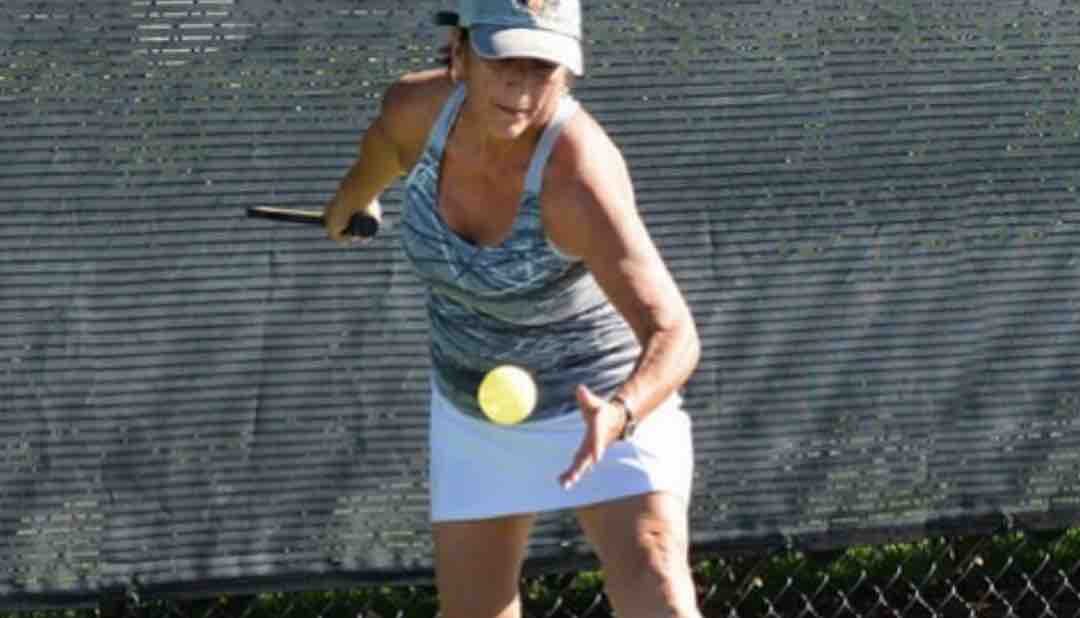Serving in pickleball is critical and one of the first skills worked on by beginner players. Serving starts the point and is done by all players on the court. The pickleball serving rules are fairly straightforward, however there are a few nuances which must be understood and adhered to.
Overview – The 5 Basic Pickleball Serving Rules
- The ball must stay inbounds
- There should be one bounce per side
- Serving must be done at the baseline
- The serve can’t land in the no-volley zone
- The game ends at 11, 15, or 21 points
Determining Serving Team
Players use a variety of methods for choosing which team will serve first.
- Tossing a coin
- Holding a hand behind your paddle with 1 or 2 fingers up, having your opponent choose “1” or “2”
- Writing a “1” or “2” on a piece of paper, having your opponent choose “1” or “2”
- Rock – Paper – Scissors
The winner of the decision method will have the option to choose side or to serve or receive.
The Pickleball Serve
- The serve must be made underhand
- Paddle contact with the ball must be below the server’s waist (navel level)
- The serve is initiated with at least one foot behind the baseline; and neither foot may contact the baseline or court until after the ball is struck
- The serve is made diagonally crosscourt and must land within the area of the opposite diagonal court
- Only one serve attempt is allowed unless a point is won, then the server changes sides and serves again
Service Sequence in Pickleball Doubles
NOTE: in pickleball singles, only one serve is completed from each player unless a point is won. Once a fault occurs, the opposing player begins their serve. There are many side outs in pickleball singles.
- Both players on the serving team have the opportunity to serve and score points until they commit a fault (except for the first service sequence of each new game, which stars with the second server)
- The first serve of each side-out is made from the right-hand court
- If a point is scored, the server switches sides and the server initiates the next serve from the left-hand court
- As subsequent points are scored, the server continues switching back and forth until a fault is committed and the first server loses the serve
- When the first server loses the serve the partner then serves from their correct side of the court (except for the first service sequence of the game)
- The second server continues serving until his team commits a fault and loses the serve to the opposing team
- Once the service goes to the opposition (a side out), the first serve is from the right-hand court and both players on that team have the opportunity to serve and score points until their team commits two faults.
- In singles the server serves from the right-hand court when his or her score is even and from the left when the score is odd.
Pickleball Scoring Rules
- Scoring a point can only happen for the serving team
- Each match is typically played as best two out of three games played to 11 points (win by 2 points), with game three being played to 15 points, win by 2 points
- When the serving team’s score is even (0, 2, 4, 6, 8, 10) the player who was the first server in the game for that team will be in the right-side court when serving or receiving; when odd (1, 3, 5, 7, 9) that player will be in the left-side court when serving or receiving
Double-Bounce Pickleball Serving Rules
- When the ball is served, the receiving team must let it bounce before hitting their return, and then the serving team must let it bounce before returning – thus two bounces must occur before a rally begins
- After the ball has bounced once in each team’s court, both teams may either volley the ball (hit the ball before it bounces) or play it off a bounce (ground stroke)
- The double bounce rule eliminates the serve and volley advantage and extends rallies
Line Calls
- A ball contacting any line, except the non-volley zone line on a serve, is considered “in”
- A serve contacting the non-volley zone line is considered a fault
Serving Faults
- A fault is any action that stops play because of a rule violation
- A fault by the receiving team results in a point for the serving team
- A fault by the serving team results in the server’s loss of serve or side out
- A fault occurs when:
- A serve does not land within the area of the receiving court or sideline or baseline
- The ball hits the net on the serve
- The ball is volleyed before a bounce has occurred on each side
- The ball is hit out of bounds
- A ball bounces twice before being struck by the receiver
- A player, player’s clothing, or any part of a player’s paddle touches the net or the net post when the ball is in play
- There is a violation of a service rule
- A ball in play strikes a player or anything the player is wearing or carrying
- A ball in play strikes any permanent object before bouncing on the court

